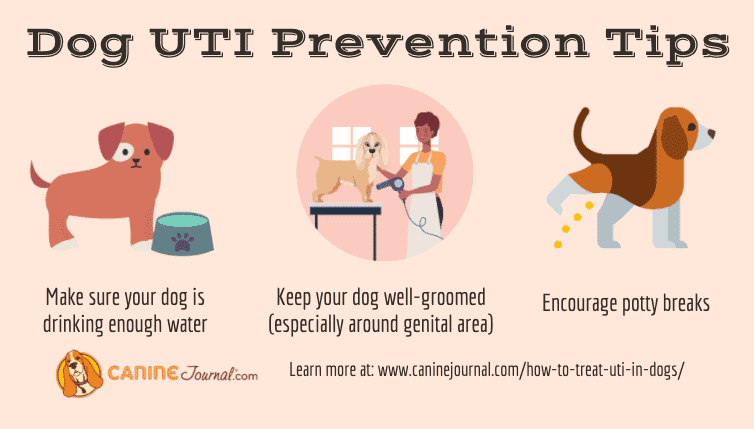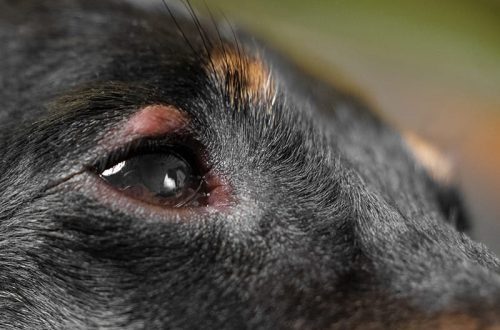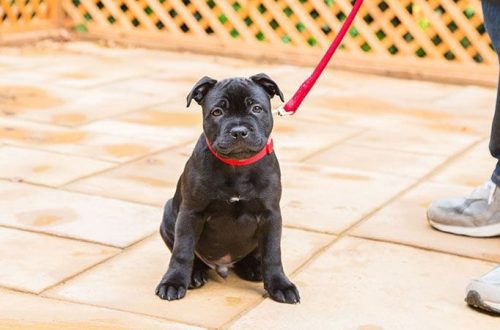
Cystitis i nā ʻīlio: nā hōʻailona, ka mālama home, nā lāʻau
Contents
Nā hiʻohiʻona o ka maʻi
With cystitis, the pathological process is localized inside the bladder, while not only the mucous membrane of the organ, but also the muscle layer can be involved in it. In the vast majority of clinical situations, inflammation extends to the urinary tract. The disease is caused by the penetration of pathogenic microbes, among which there may be staphylococci, streptococci, Escherichia coli and others. They penetrate into the organ, have a destructive effect on the inner membrane, provoke the formation of ulcers, sores, wound surface.
Cystitis can occur in dogs of any age and breed. Most often, pathology is observed in bitches, which is due to the peculiarities of the anatomy of the urinary system. In addition, frequent hormonal changes (childbirth, pregnancy, estrus) contribute to a decrease in immunity, which leads to increased reproduction of bacteria.
Inflammation of the bladder affects dogs of small breeds, short-legged, hairless. Their body is unstable to low temperatures, which provokes hypothermia and the development of the disease.
Classification of cystitis in dogs
There are several classifications of cystitis in dogs. So, they distinguish primary (develops independently) and secondary (is the result of another disorder in the body) inflammation. The disease can be descending or ascending. In the first case, the infection enters the urinary system with blood flow or from the kidneys – it is rarely observed, mainly this is a consequence of pyelonephritis. Ascending cystitis develops in most cases, the source of infection can be the urethra, vagina, anus.
In addition, the following types of cystitis are distinguished by the type of inflammation:
- hemorrhagic – a consequence of trauma to the bladder;
- eosinophilic – reaction to allergens, helminthiases, microbes;
- ossifying – the result of metastasis of neoplasms of bone tissue;
- polyiploid – provokes the formation of polyps;
- emphysematous – develops due to the activity of microorganisms that produce gases.
Also, cystitis can occur in an acute form or chronic, characterized by periodic exacerbations.
He aha nā pilikia e hiki mai ana?
Untimely treatment of the acute form of cystitis leads to its chronic course. In four-legged friends, pathology can lead to the development of a number of complications:
- ke koko kiʻekiʻe;
- pyelonephritis;
- puʻuwai puʻuwai;
- mimiki ʻole;
- hōʻino ʻole o ka renal.
Causes of Cystitis
Cystitis in dogs often develops against a background of weakened immunity – microorganisms begin to multiply intensively and penetrate into the tissues of the urinary system. The causes of the disease can be the following factors:
- hypothermia (bathing in cold water, sleeping on a tile, draft, prolonged exposure to frost, and so on);
- kidney and bladder stones, inflammatory processes in the kidneys;
- helminthiases;
- neoplasms of a different nature;
- in females – vaginitis;
- lāʻau lapaʻau;
- nā maʻi maʻi maʻi;
- vascular disorders in the organs of the urinary system;
- nāʻeha.
Inflammation in the bladder can also be caused by improper nutrition of the dog, for example, the abuse of low-quality industrial feed.
kiʻi lapaʻau
Urinary incontinence is a specific symptom of acute cystitis. Due to severe damage to the mucous layer and the spread of inflammation to the muscle layer, the bladder cannot fully perform its function and retain the accumulated urine. As a result, the dog often asks to go to the toilet, and sometimes urine flows out involuntarily. The same is observed during an exacerbation of chronic inflammation.
In addition, pathology can be recognized by other signs:
- pain, due to which the dog whines during urination, and males change their position when urinating (sit down, as it becomes painful to raise the limb);
- urine is excreted in small portions;
- mucus, blood, purulent inclusions are found in the liquid;
- urine is cloudy, has a sharp unpleasant odor;
- make wai;
- hoʻemi i ka makemake;
- ke kuni;
- tense abdominal wall.
The dog becomes indifferent to everything, but at the same time apathy can alternate with irritability and aggressiveness.
Nā hiʻohiʻona Diagnostic
To diagnose cystitis, it is necessary to conduct an examination of the dog. In any case, you will need to bring your pet to the clinic, even if the signs are not too intense – inflammation of the bladder is similar in symptoms to other pathologies, which requires a completely different treatment.
The doctor will definitely take blood and urine for general and biochemical studies. In addition, a bacterial study may be required to determine the type of infection. It is possible to carry out:
- Ultrasound (reveals the prevalence of the process, the presence of sand, stones, shows the state of neighboring organs);
- x-ray (shows stones, neoplasms);
- cystoscopy (examination with a cystoscope makes it possible to directly examine the bottom and walls of the bladder, at the same time to carry out medical manipulations, for example, the introduction of antiseptic solutions).
Ka mālama ʻana i ka cystitis i nā ʻīlio
The treatment of cystitis in dogs is started immediately, regardless of the severity of the symptoms, since the development of the disease occurs very quickly. At the beginning of therapy, antibacterial drugs with a wide spectrum are used, and then (if necessary) a medicine is selected that acts on a specific pathogen.
The complex of therapeutic measures includes medications of different groups, folk remedies, diet therapy. Treatment of cystitis is carried out completely, without stopping even with the improvement of health and the disappearance of symptoms. After that, a control diagnosis is made. The owner of the dog needs to be prepared for the fact that the process can drag on for 3 or more months.
Laau Laau Laau
For cystitis in dogs, the following medications are indicated.
Nā Hana
ʻAi (no ka lā)
Papa (lā)
hiʻona
Pāpaʻipa
Baitril
0,2 ml/kg
3-10
I loko o ke kino
Ceftriaxone
30 mg/kg
5-10
Divide by 2-3 times
ʻO Furadonin
5-10 mg/kg
7-10
Divide by 2-4 times
Analgesic, antispasmodic
Analgin
1 t/20kg
-
Not for puppies, small animals with kidney disease
Akā-paʻi
1 t/10kg
-
Can be replaced by injection: 1ml/10kg
To eliminate tissue swelling
Eia keʻano
Big dog – 2 t.
Average – 1 t.
Small – 0,5 tons.
-
-
Hemostatic (if there is blood in the urine)
Vikasol
1mg / kg
3-5
I loko o ke kino
CaCl
5-15 ml
Wahi a nā hōʻailona
intravenously, slowly
For flushing the bladder
Furacillin
Carried out in a clinic according to indications
Fizrastvor
Carried out in a clinic according to indications
Boric solution
Carried out in a clinic according to indications
Nā lāʻau lapaʻau homeopathic
Application Stop cystitis
A series of medicines called Stop Cystitis has gained great popularity in the treatment of cystitis in dogs. It is presented in two forms: tablets and suspension. In addition, there is a suspension of the drug with the prefix “Bio”, which can be used to prevent inflammation of the bladder.
The use of Stop Cystitis allows you to quickly and effectively eliminate the symptoms of the disease and reduce inflammation. Thanks to the active ingredients, represented by both plant and drug compounds, the product has a multilateral effect:
- hoʻopau i ka hana inflammatory;
- removes sand from the bladder;
- prevents the growth of microbes;
- promotes urination.
e hoomakaukau ai
ʻAi (no ka lā)
Papa (lā)
palapala aie
Price
Hoʻomaha
4-6 ml
Wahi a nā hōʻailona
Divided by 2 times
About 300 r.
Pills
2-3 tab
7
Taking twice a day
ia
“Ua”
2-3 ml
7
1-2 manawa i kēlā me kēia lā
About 350 r.
The drug Stop-cystitis does not cause adverse reactions of the body and has no contraindications. Only occasionally you can see reviews that the dog has an intolerance to the medicine. To obtain a guaranteed result, the manufacturer recommends that you monitor the timeliness of taking the remedy and carry out the course of treatment to the end.
ʻO ka lāʻau lapaʻau kuʻuna
Simultaneously with drug treatment at home, it is permissible to use folk remedies. But it is impossible to use them as an alternative, especially without confirming the diagnosis. Also, when choosing one or another collection and method, you must first consult with a veterinarian. Certain herbal compounds can enhance the effect of drugs or, on the contrary, weaken them.
With cystitis in dogs, experts recommend using decoctions and infusions of diuretic plants: bearberry, horsetail, knotweed. Herbs such as lemon balm, mint, chamomile perfectly cope with pain. Have an anti-inflammatory effect: parsley, marshmallow rhizome, St. John’s wort, licorice.
To prepare the infusion, vegetable raw materials (dry and crushed) are taken in the amount of one tablespoon and pour ¼ liter of boiling water. After the composition has cooled, it is passed through gauze or a sieve, while the remaining raw materials must be squeezed out. You can store the infusion in the cold for a day. It should be given to your pet twice a day in a dosage corresponding to the size of the dog (on average, 2-4 tablespoons). During treatment, you need to make sure that the four-legged friend does not have an allergic reaction or other symptoms that indicate intolerance to the herbal composition.
Hoʻokō me ka meaʻai
Diet is an essential component of the treatment complex for cystitis. From the very beginning of the disease, the dog must be “put” on hunger and only water should be given, observing its condition. As a rule, in the acute form of the inflammatory process, the animal itself refuses food, but if there is an appetite, then after 1-2 days it is permissible to give lean broth (fat must be excluded from the diet for the duration of treatment).
In the future, the dog’s diet should consist mainly of vegetable and protein (to a lesser extent) products. Cereals, bread, pastries are excluded. It is desirable to add vitamins to food, especially C, in the form of fruit drinks or syrups based on cranberries, rose hips, and currants. The pet may refuse such a “treatment”, in which case the syrup is poured with a syringe deep into the root of the tongue several times a day.
Dogs that are used to dry food should also follow a diet. After hunger, they can be given special mixtures little by little. Such large manufacturers as Purina, Royal Canin and the like include feed intended for animals with a particular disease in their product line.
It is important that during the treatment of cystitis, the pet drinks plenty of water. This will speed up the removal of toxic metabolic products from his body.
Prevention of cystitis in dogs
Most cases of cystitis in dogs can be prevented. There will be several preventive measures.
- Do not allow your pet to become dehydrated. The dog should always have clean water.
- It is necessary to take the animal to the toilet as often as possible (as far as employment allows), at least three times a day. If this is not possible, a tray should be placed for it.
- Do not allow the dog to be in a draft, tile or concrete floor. Make sure that when walking in frosty weather, the animal does not get cold.
- Prevent accidental mating of dogs, as well as walking in places where homeless animals gather.
- If the four-legged friend has long hair, you need to cut it in the anus. This will prevent infection from entering the urethra, and will also serve as a prevention of self-infection when licking.
- Periodically, you should check the condition of the pet’s oral cavity. An infection centered on the teeth can cause cystitis during licking.
- At least once a year, it is necessary to visit a veterinary clinic, undergo a preventive examination and donate blood and urine for tests.
Cystitis in dogs has a favorable prognosis with timely treatment to a doctor. Even isolated cases of urinary incontinence should be a reason to contact a veterinarian. It is better to get rid of the pathology at the initial stage than to treat its consequences for a long time.





